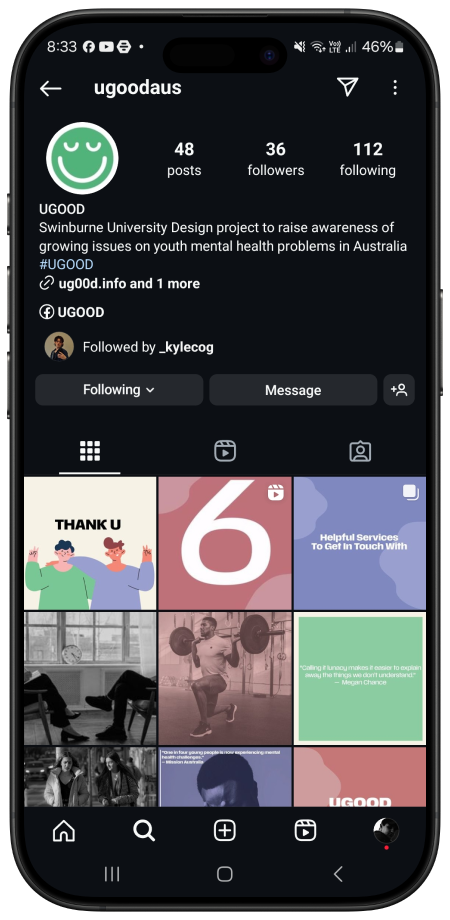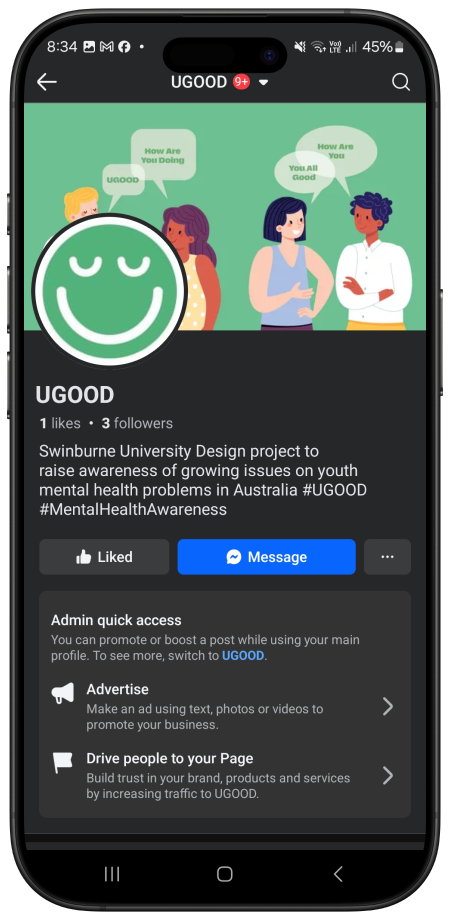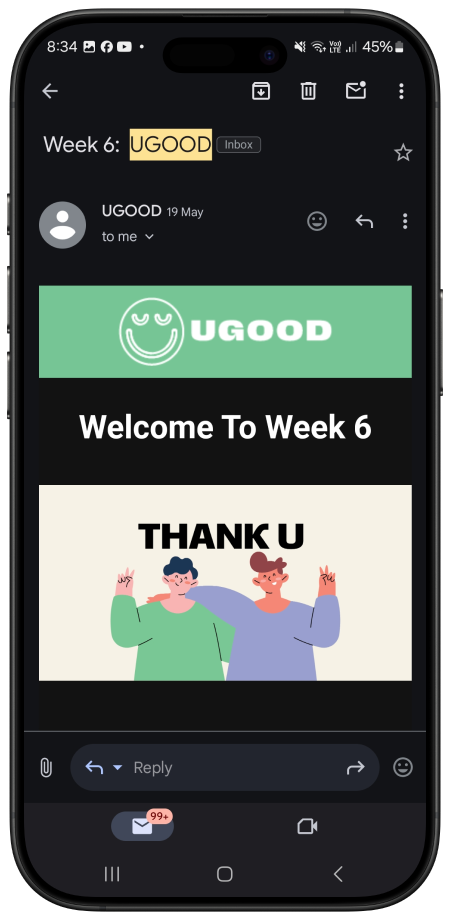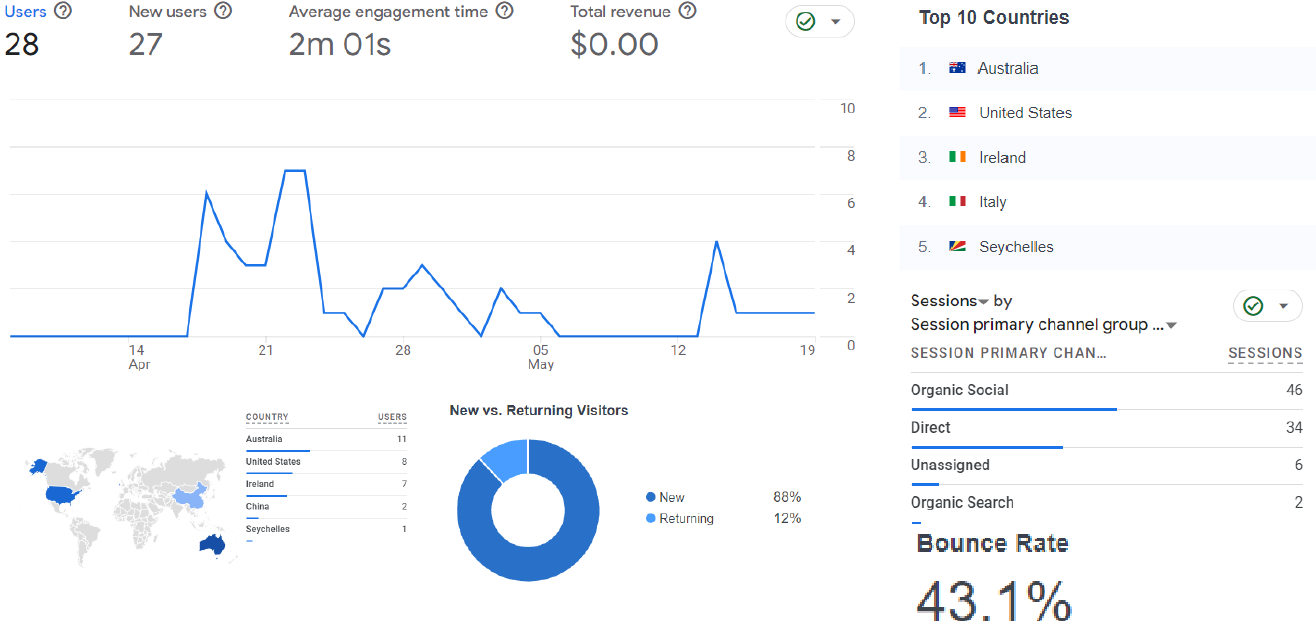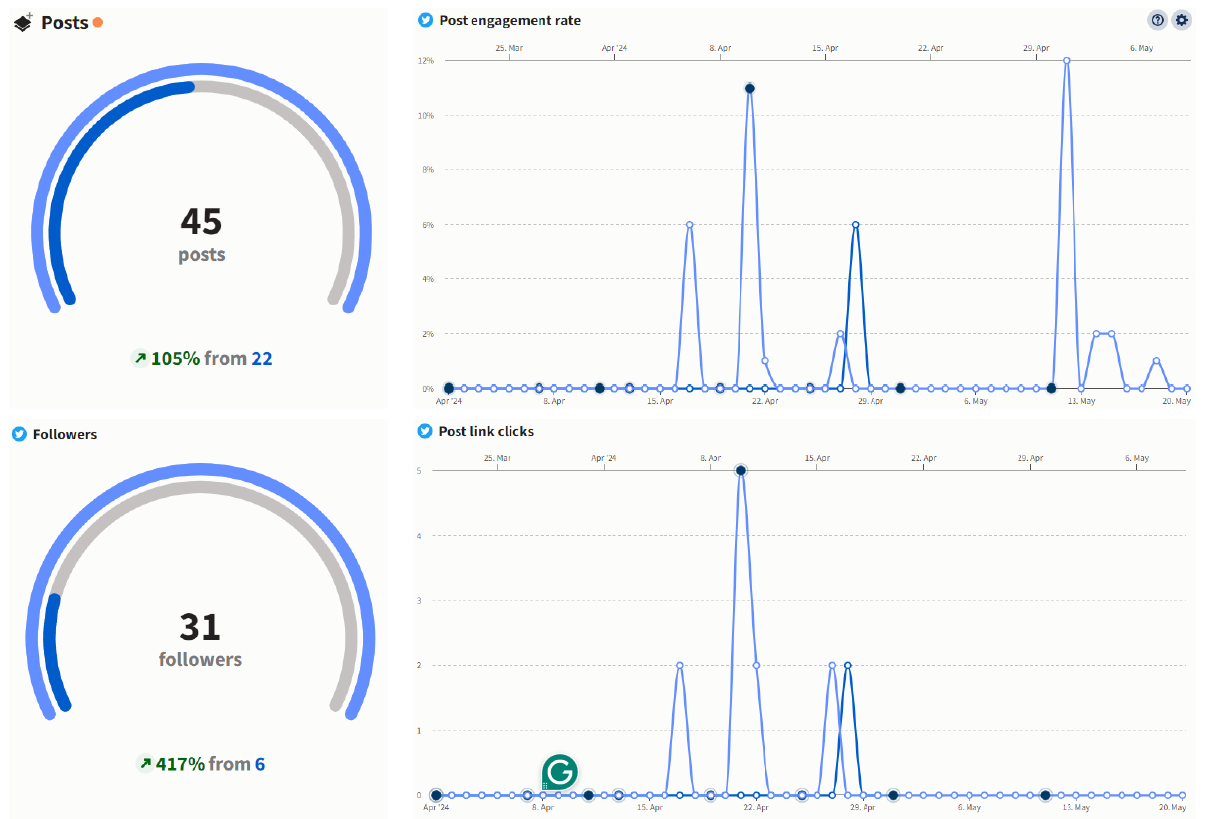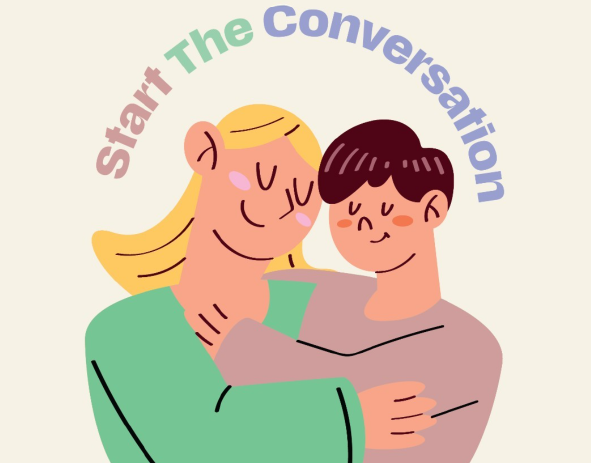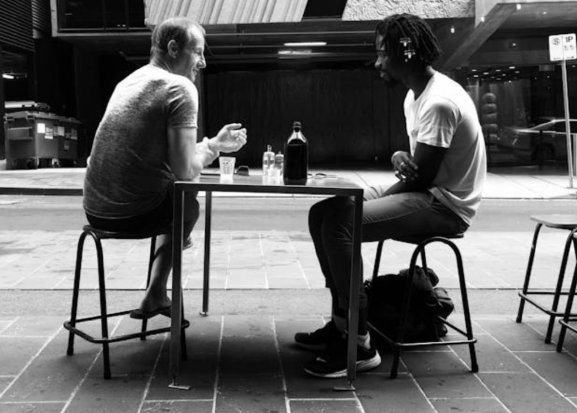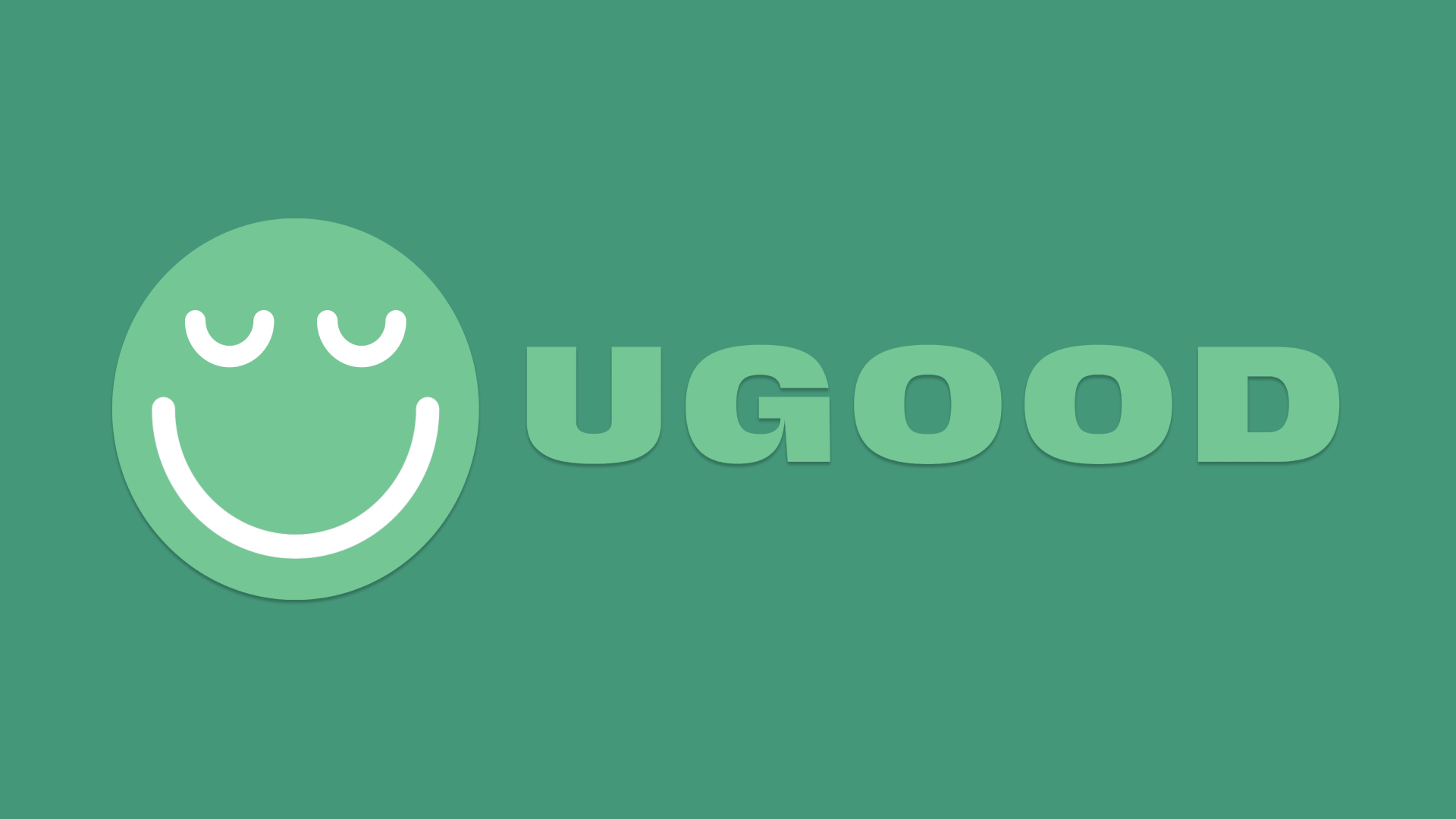
Overview:
"UGOOD" is a digital marketing campaign to raise awareness of rising mental health issues among young people in Australia. It seeks to inform the public about current mental health research and improve interactions with youth facing mental health challenges. The campaign features a well-designed website and social media posts that provide weekly updates, blog articles on new research, statistics, and support resources for mental health.
Goals:
Raise Awareness of Mental Health Issues: Educate the public on the frequency of mental health issues among young Australians and their impacts. The campaign aims to reduce stigma and encourage open discussions using current statistics and research.
Increase Knowledge of Resources and Support Networks: Provide clear information about mental health resources, such as helplines, local services, and online support tools to assist young people and their supporters.
Promote Information: Share recent research and facts about youth mental health to ensure people access credible, science-based information and correct any misunderstandings about mental health issues and treatments.
Role: UX/UI Designer / Idea generation, UX researcher, Information Architecture, Marketing
Timeline: 3 months (March-May 2023)
Tools: WordPress, Adobe Suite, Hootsuite, Google Analytics Pen and Paper
Brief:
to build a cross-channel online marketing campaign around an issue of ‘sustainability and human wellbeing’ in an Australian context.
Target Audience:
The target audience was young Australians aged 18-30, including students and young professionals of any gender. They often spend time indoors and may face mental health challenges personally or know someone who does. They are proactive about their mental health and may already see or consider seeing a mental health professional. They look for resources to boost their mental well-being and are open to tools and guidance for a healthier mindset.
Aim:
UGOOD seeks to significantly raise awareness about the concerning rise in mental health issues among youth in various Australian cities. In addition to this, it also aims to educate the general public about the latest in mental health research and how to effectively and compassionately support young individuals who are facing challenging circumstances during difficult times.
Problem:
One in four young people are now experiencing mental health challenges.” (Mission Australia)
From my research, I found that Australia is facing a serious mental health crisis that needs immediate action. The Australian Bureau of Statistics shows that about 20% of the population, around 4.8 million people, struggle with mental health or behavioral issues, rising from 18% in 2014-15. Anxiety affects 13% of Australians, or 3.2 million, which has increased from 11% in recent years. Furthermore, 10% deal with depression, up from 9%. Overall, 42.9% of people aged 16 to 85 have had a mental disorder in their lives, and 21.5% faced one in the past year, with anxiety being the most common at 17.2%. Alarmingly, 38.8% of young people aged 16 to 24 reported having a mental disorder in the last year.
Smart goals:
Website:
Post 1-2 updates on the website each week to keep users engaged and informed about new content. Optimize the page layout and include images to encourage users to stay longer. This will demonstrate the engaging nature of the website to new visitors. Aim for a bounce rate of 60% or lower on the homepage by the end of week 5, monitored weekly through Google Analytics.
EDM:
Increase the open rate of my email campaign by 5 each week, aiming for at least 10 opens by week 6 of the UGOOD campaign. This will indicate interest in the weekly content and help determine which email templates perform better through A/B testing. We will analyze the results using Mailchimp's reports to track open rates, unsubscribes, and optimal sending times.
Facebook:
Aim for 1-3 mentions on the campaign's Facebook every two weeks to reach a total of 9 mentions by the campaign's end, showing engagement with the content. Try to post 4 original updates each week to attract new followers, with a goal of gaining 5 new followers weekly. Engage in larger groups or collaborate with bigger accounts to encourage likes and comments, boosting interest and growth for the campaign's Facebook page by its conclusion.
Instagram:
Gain about 5 followers each week during the six-week campaign. Post 5 pictures, 1 reel, 2 carousels, and 4 stories weekly. Track progress with Instagram Insights and Facebook Business Dashboard. This aims to build a community of engaged followers who may share my content, further expanding the account. I will like and comment on connections made by followers on UGOODS posts to help spread key hashtags and grow the following.
X:
Engage with about 5 X accounts weekly by liking, commenting, and retweeting on the campaign's Twitter page, along with posting 7 tweets. Analyzing these interactions weekly will assess content success and encourage website visits. Simplifying posts from other social media will keep them informative yet engaging, attracting followers and directing them to additional content.
Sketches & desigsn:
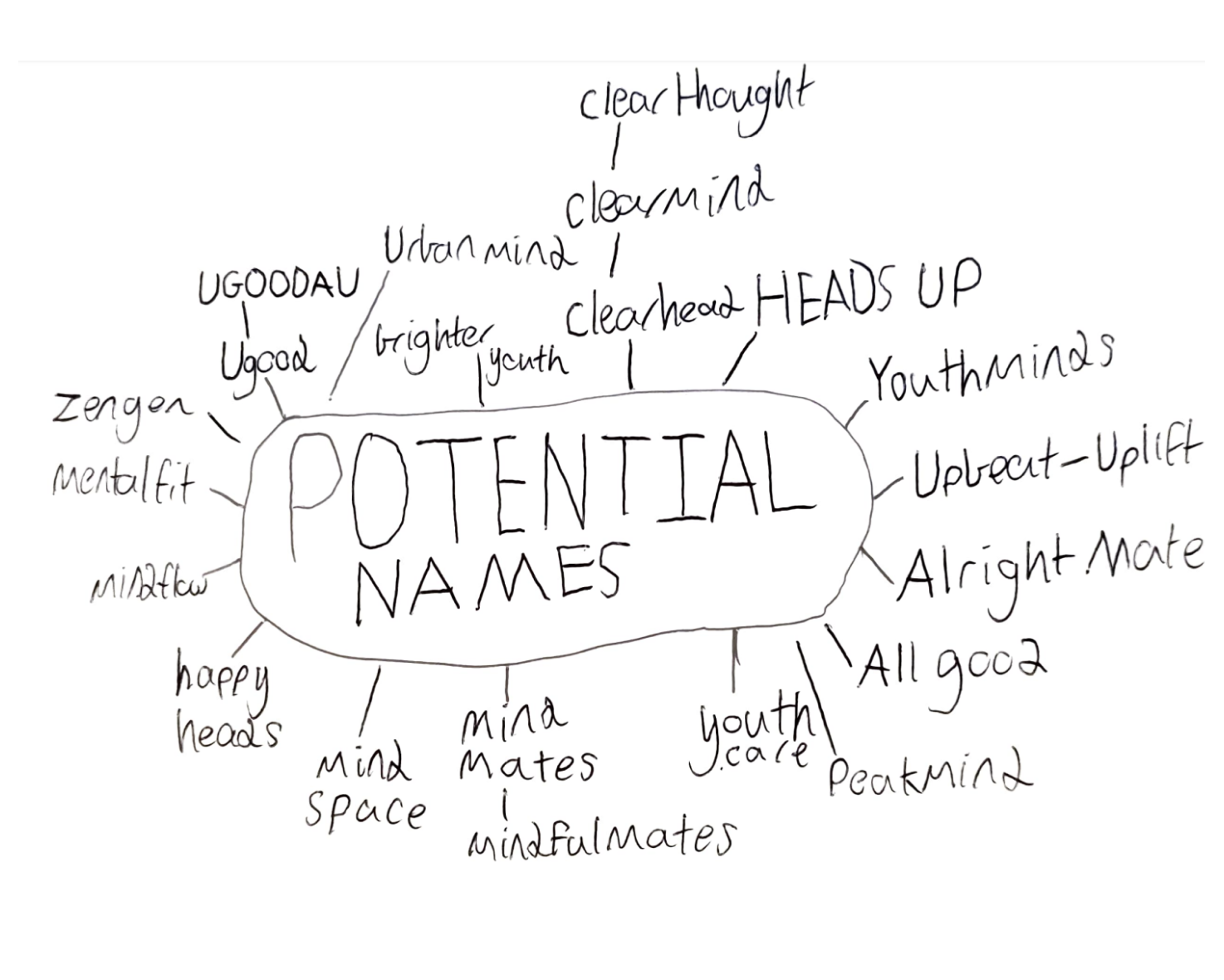
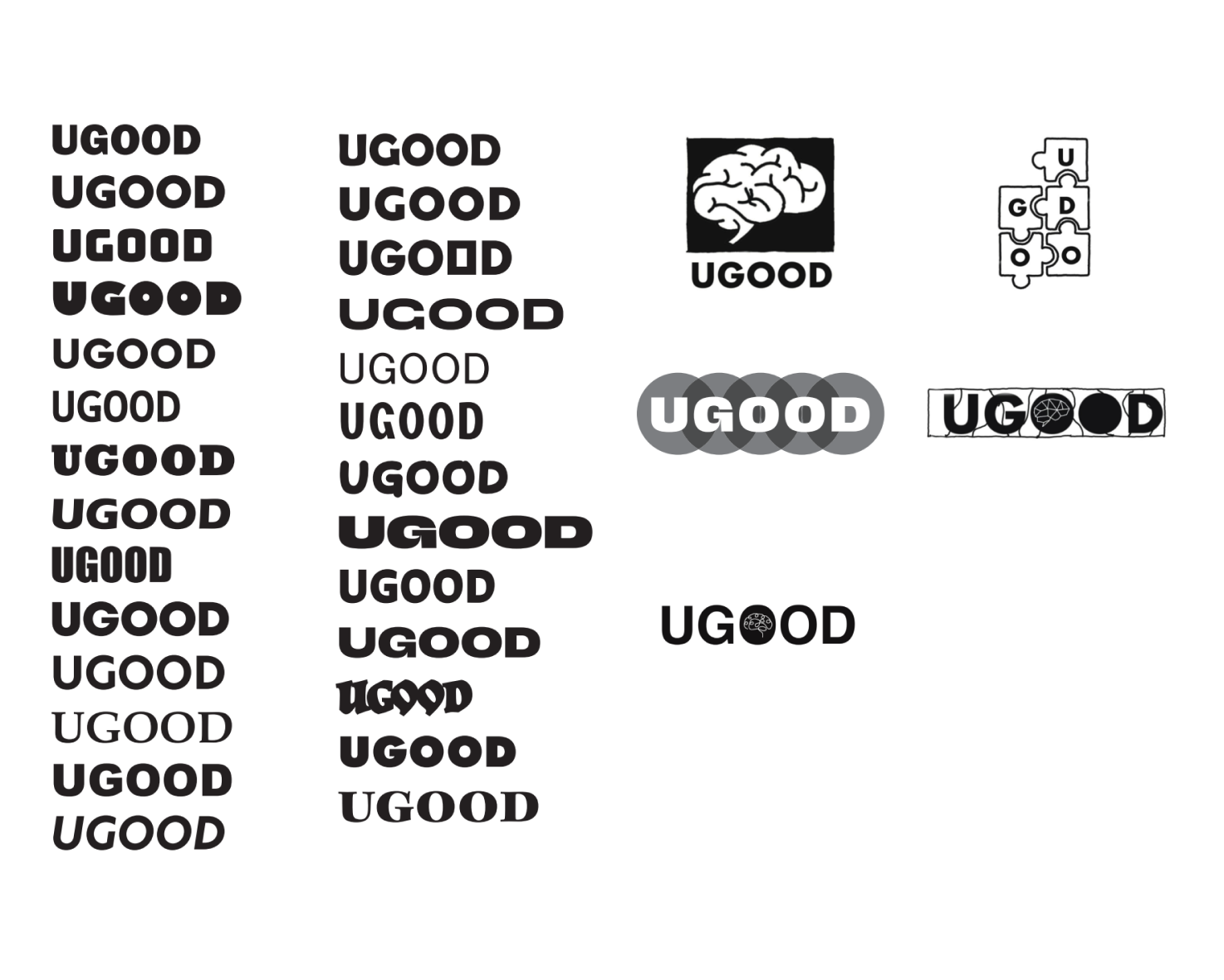

Website:
I designed the website to be as inviting as possible by using a vibrant aesthetic with a pale tri-color palette, along with bright and cheerful imagery and bold typography. This approach aims to keep users engaged while ensuring they remain focused on the central message of mental health awareness. The homepage features some key statistics, and there is also an important section to view the current posts and blog entries that I upload weekly throughout the campaign. These updates are also marketed on social media, and users can navigate to them via the navigation bar in the top right-hand corner of the page.
Social media:
X:
Instagram:
Facebook:
EDM:
Results & performance:
Website:
Goal: Website posts 1-2 times a week.
The website aimed for one post per week over six weeks. By week three, the goal changed to 1-2 posts weekly, but I only managed one post per week for the remaining three weeks. This meant I met the minimum goal but didn't achieve more, which could have attracted more visitors.
Goal: 30% or lower bounce rate on the website.
The goal was to maintain a bounce rate of 30% or lower, which was achieved by the halfway point due to effective content shared through social media. By week three, the target was adjusted to a 40% bounce rate to encourage more visits, but I didn't reach this because my content quality dipped in weeks four to six.
Goal: 40 unique visits to the website by the end of the campaign.
The campaign initially aimed for 20-30 unique visits by week three, which was achieved with about 21 visits. The goal was then raised to 40 unique visits by the campaign's end. However, only 28 unique visitors were recorded by week six, due in part to reduced promotion in weeks four and five
EDM:
Goal: 10 newsletter subscriptions by the campaign's end.
The initial goal for the email marketing campaign was to reach at least ten newsletter subscriptions within six weeks. However, I only achieved five subscriptions, all from friends I asked to sign up. By week three, I had no subscriptions because I didn't start promoting the newsletter until week five, which was the worst week in terms of performance. The content was not engaging and did not include links to the newsletter or website, causing delays.
Goal: 60% or higher open email rate.
The second goal was to reach a 60% or higher open rate for the newsletter. This was accomplished because all subscribers were friends. I asked them to click the email when they saw it, resulting in a 60% open rate. However, the click-through rate to my website and social media was only 20%.
Goal: One new EDM per week.
The final goal was to send at least one new email newsletter each week. This goal was met, although a few newsletters were sent late due to unforeseen circumstances. By the end of the campaign, six newsletters were delivered.
X:
Goal: Engage with 10 Twitter Accounts per Week
The goal for our Twitter engagement was to connect with ten different accounts each week. However, this was only met by engaging with seven accounts. This limited our potential growth, but our content still performed well, achieving over 1,534 post impressions on Twitter. This indicates that our posts were more visible on Twitter compared to other platforms, validating our design choices for Twitter posts.
Goal: At Least 10 Tweets per Week
The second goal was to post about ten tweets weekly to grow our audience. Instead, we managed only seven to eight tweets per week, which affected our growth potential and visibility on the platform. Despite this, Twitter emerged as one of our better-performing channels, ranking second overall, just behind Instagram.
Facebook:
Goal: 25 followers by the end of 6 weeks
The aim for the Facebook campaign was to gain over 25 followers in six weeks. However, only three followers were gained. This low number may be due to targeting users aged 16 to 25, who often don't use Facebook regularly. In future efforts, I need to focus on creating content for an older audience to improve follower engagement.
Goal: 5-10 original posts per week
The second goal was to post five to ten times a week, which was met with about five to six posts weekly. While the quantity was sufficient, the posts failed to engage the Facebook audience. Future content should prioritise quality and engagement over quantity.
Instagram:
Goal: Reach at least 60 followers on Instagram in 6 weeks.
The campaign aimed for at least 60 followers by the end of the 6 weeks but only reached about 37. This shortfall might be due to unengaging content or not reaching enough people at the right times. Running paid promotions in the future could help increase visibility beyond just hashtags.
Goal: At least 5-10 Instagram picture posts per week.
The second goal was to post 5 to 10 pictures each week, which was met with an average of 6 posts weekly. This consistency gained around 27 new followers in the first three weeks. However, only ten new followers were added in weeks four to six. Week five saw no engagement until Sunday, affecting the overall follower count.
NOTABLE SUCCESSES:
Reach:
A significant success for the campaign came from the visibility of specific content on my social media pages. My later Instagram reels garnered over 100 views each, but my Twitter was the standout, achieving over 1,534 post impressions. This number surpassed my expectations, not just for the campaign, but for one of my social media pages, exceeding my target audience reach by ten times.
Stylized Content:
The campaign succeeded because it featured unique, entertaining, and educational content that met its six-week goals. The custom artwork using a tailored colour scheme performed much better than content created with Hootsuite's AI. The AI-generated content, with its generic tags and imagery, appeared dull and uninviting. In contrast, the stylized content attracted significantly more views than photos of people.
Themes:
The campaign succeeded by addressing various important topics each week, focusing on youth mental health in Australia. It covered statistics on youth mental health, communication tips for talking about mental health issues, ways to reduce stigma, the role of exercise in improving mental health, and the importance of seeking help from professionals during difficult times. This approach led to strong impressions and engagement across all platforms, helping us achieve our campaign goals.
NOTABLE OPPORTUNITIES:
Time Management:
I struggled with time management during the six-week campaign. I often left tasks until the last minute, which caused some to carry over into the next week. I started the campaign a week late, but I was in a better position by week six. However, I only posted my content on two days instead of spreading it throughout the week. This limited the campaign's growth and is an important lesson for me.
Automation:
During the six-week campaign, I used Hootsuite's automated onboarding AI and ChatGPT to create content in the middle of the week. This led to fewer page views and click throughs to my website because the content felt lifeless and dull. In week six, I switched to my own content, but it was too late, and the overall performance of the campaign suffered. This was a valuable lesson for my future marketing efforts with other campaigns and websites.
Tailored Content:
The main issue I encountered during the campaign was not producing styled content for each platform, but rather using similar or identical content across all of them. This was particularly problematic on Facebook, where the audience consists mainly of older users. Since our target age group was 18-30, it highlighted the need for tailored content for different demographics and social media platforms. Focusing on specific content for each platform is more effective than posting the same material everywhere.
Reflection:
Throughout the 6-week UGOOD web campaign, I gained valuable insights into the end-to-end process of conceptualising, strategising, and executing a digital marketing campaign. This experience taught me how to create an effective foundation for a campaign, plan its trajectory, and adapt as needed. I acquired hands-on skills in building and managing a WordPress website, designing targeted email newsletters, and creating engaging content across various social media platforms.
Despite not reaching all my initial targets—such as follower counts across platforms and organic subscriber growth for my EDM—I learned much about the complexities of running a web campaign. This experience gave me a realistic view of the challenges involved and strengthened my understanding of campaign management and performance analytics. Moving forward, these lessons will be invaluable in shaping more impactful campaigns and building successful digital strategies for future clients or projects.



